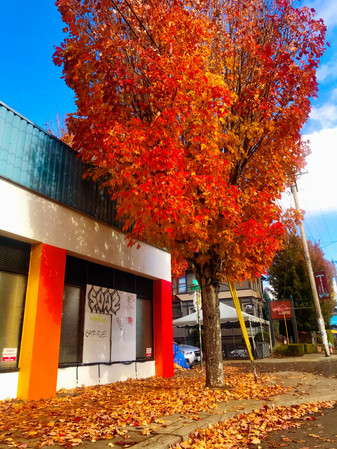MELISSA MERMIN
The Lonely Landscape
Before I picked up a camera professionally, I was a painting major studying at the Art Institute of Boston and Massachusetts College of Art. Painters that inspired me used thick, saturated punchy color to tell their narrative on the canvas: Yellow orange glow from the afternoon sun or a street lamp. Forest greens and deep purples in the shadows and a sprinkle of sadness or tension under the surface. Edward Hopper, Renee Magritte, Richard Diebenkorn and Wayne Thiebaud are some of my heroes of the realism and abstract movement from 1930s through the '60s.
When I look out my window and see deep blue skies and perfect white fluffy clouds that you imagine yourself floating up to the sky and walking on them-- I call them Magritte's clouds. When I see late afternoon light stream across the side of an old building with no one around to notice it's beauty, it's a Hopper cityscape. When I look down from a tall building and see abstract shapes of shadows and light at play, I imagine Diebenkorn or Thiebaud creating them. I feel lucky when I spot a streetscape that's barely changed in decades; I imagine my art heroes looking at the same scene and how they might have found their inspiration. I'm nostalgic for vintage signage, older buildings and neon signs complimenting the natural light in the sky. Many of these buildings are being torn down for modern housing, so I also want document their beauty before they're dead and forgotten.
One of the benefits and curses of the digital age is being glued to our phones, but now we never have to miss a fleeting moment of what we see that moves us. Street photographer Garry Winogrand me inspired to pursue photography as I loved how he humorously captured emotional moments in our fellow humans. When there's no one around to be expressive or emotional, it's the deserted streetscapes that speak to my soul.
Besides the images that were shot on film in the '90s, all of these were taken with my camera phone. I used the camera photo filters to bring out the color and contrast to try accurately portray what I saw.

Edward Hopper, Early Sunday Morning. 1930.







